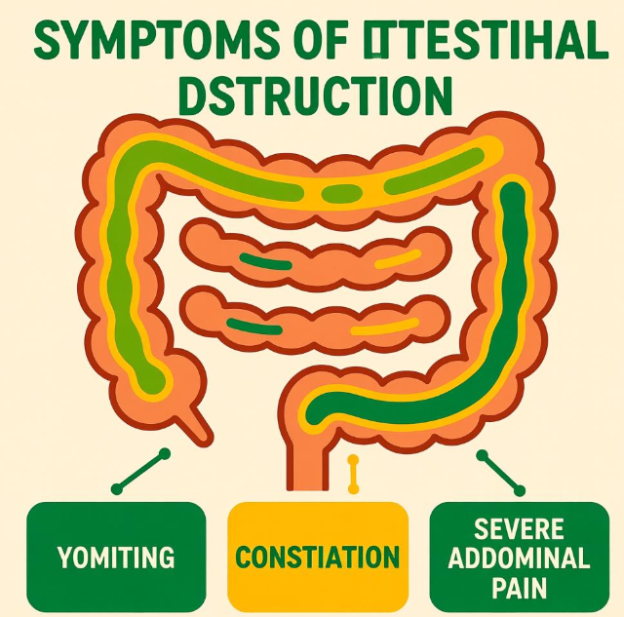The classic picture of intestinal obstruction is “pain, distension, vomiting, and absence of stool/gas.”
Abdominal pain: forceful peristalsis in the proximal bowel causes colicky pain every 5–15 min; persistent severe pain suggests ischemia or perforation.
Distension: gas and fluid accumulate proximal to the blockage, inflating the abdomen; low obstructions produce greater swelling and visible peristaltic waves.
Vomiting: high obstructions provoke early, frequent emesis—first gastric, then bilious or feculent; low obstructions delay vomiting.
Obstipation: complete obstruction abolishes flatus and stool; residual distal content may be passed early.
Auscultation reveals hyperactive, high-pitched, metallic bowel sounds; peritoneal signs or systemic toxicity warn of strangulation or perforation.
| Key Symptom | Description |
|---|---|
| Colicky abdominal pain | Intermittent cramps every 5–15 min |
| Abdominal distension | More marked in distal obstruction |
| Vomiting | Early & bilious (high), late & feculent (low) |
| Obstipation | No flatus or stool in complete obstruction |
| Hyperactive bowel sounds | High-pitched, metallic on auscultation |
| Peritoneal signs | Persistent pain, guarding → possible strangulation |
